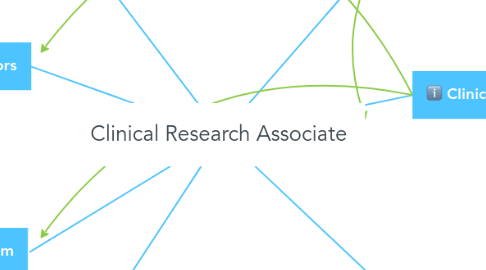Clinical Research Associate
by Ahmad Noori


1. patients
1.1. All types of communication are necessary to interact with patients. CRAs are regularly checking up on the patients via the telephone conversations to assess the study effects, or even through their body language and tone. CRAs need to practice a very compassionate and kind tone with the patients to ensure that no mishaps happen and to ensure a smooth consent process. At times, CRCs may also be asked to interact with patients. Presentation of the study's benefits and risks are also shared with this group.
2. sponsors
2.1. Verbal communication to discuss the clinical trial's site capability to hold the clinical trial.
2.2. Non verbal- emails, sponsorship letters and perhaps online discussions on the status of the trial.
3. Clinical team
3.1. This form of interaction requires the CRA, to either train the team members such as nurses, physicians and other health care personnel about the study protocols. This would include emails, application and study related documents being transferred among the different clinical research team. Verbal forms of communication entails: meeting, face to face interactions and phone conversations. This type of interaction also asks for nice tone and practicing a professional etiquette, as the CRA is representing the clinical trial team.
4. REB (Institution)
4.1. Mostly written communication as forms are exchanged between these 2 groups for the study approval by the REB. Verbal communication may involve meetings to discuss the study protocol and to ensure the REB approval process is finished smoothly.
5. Principle Investigator
5.1. Written communication-Study documents, presentation of study findings, meeting minutes. Emails. Discussion of issues with careful consideration to the tone.
5.2. Verbal communication-phone conversations, meetings. Mostly to discuss the study related topics.
5.3. Non verbal cues-only necessary at times when conflict resolution is necessary.
6. Clinical Research coordinator
6.1. Written form-emails, meeting minutes and any document such as consent forms and study related documentation.
6.2. Verbal-mostly the point of contact for CRAs in order for the
7. Montiors
7.1. Verbal
7.1.1. Meetings to discuss the conditions of the clinical trial site. Further discussions on the maintenance of the site's facilities in terms of clinical trials.
7.2. Non Verbal
7.2.1. Written form of communication such as emails and site documentation. Along with any other study related documents that maybe necessary for a smooth flow of information between CRAs and the site Monitors. Monitor's will also relay information to the CRC.
